Comparing IT Hardware Waste to Car Emissions
If you mentioned the word “Green IT” to tech support twenty years ago you probably would have been met with a blank stare.
Climate change always felt like a conversation for somebody else—not those in charge of resetting our passwords or installing Office.
But while innovations in cloud computing and business applications have helped IT cut infrastructure costs and remain competitive, that progress has come at an environmental cost. Advancements in software still require serious energy from hardware—and that’s where the IT industry has dropped the ball.
Cloud services require significant power from data centers, which currently generate 2% of all global electricity and will likely reach 8% by 2030. And sometimes just maintaining software can be unnecessarily wasteful—Bitcoin for example, takes more energy to maintain than the entire nation of Switzerland. By 2040, the IT hardware sector (PCs, laptops, monitors, smartphones and servers) will account for 14% of the world’s carbon footprint—up from 1.5% in 2007.
Yet thankfully, some IT Leaders are starting to recognize the role they play in all this and they’re trying to do something about it.
Thinking differently about Green IT
Since last year, we’ve helped one customer analyze their work devices (laptops and desktops). They discovered that since September 2020, their devices have consumed 18.96 billion Watt hours (Wh), and released 7.58 billion grams of CO2 emissions.
In only a few months, those devices released the same amount of CO2 emissions that 1,650 American cars would in a single calendar year!
By leveraging Nexthink’s experience dashboards and integration with PowerBI, our customer’s IT department was able to identify which regions consumed the most power and released the most CO2 emissions from their devices.
How did we arrive at this information?
First, some key terms:
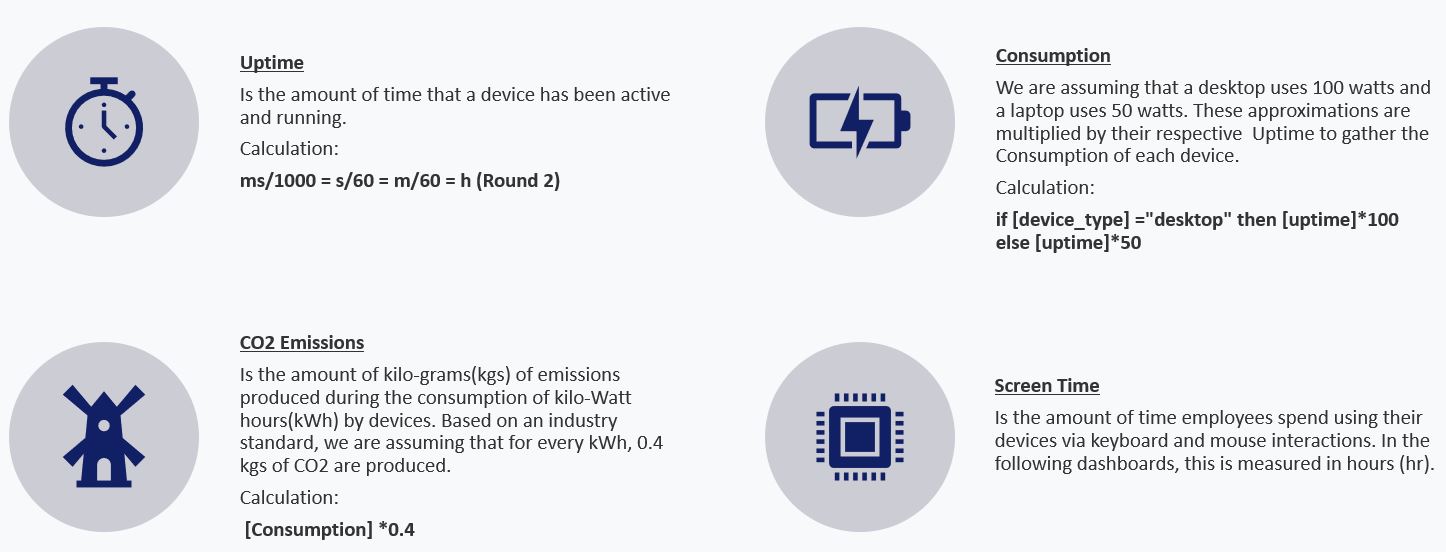
Hardware Consumption = 18.96 billion Wh (Sep 20′ – May 21′)
By focusing on device Uptime as a starting point, IT was able to infer how much energy the company’s laptops and desktops consumed and identify which regions were bigger energy consumers than others.
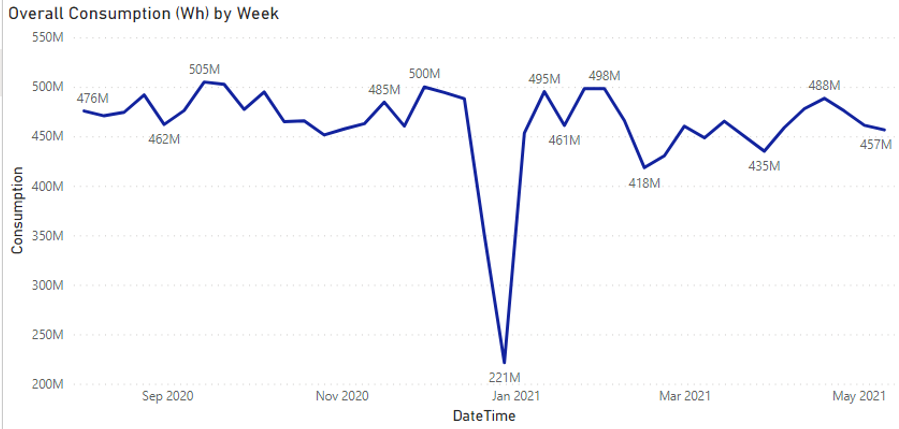
Comparing this information to the housing industry, we were able to infer that these devices consumed the same amount of power as approximately 1.73 billion American homes do in a single year (*the average annual consumption for a home in the U.S. is 10,972 kWh)!

Hardware Emissions = 7.58 billion grams of CO2 emissions (Sep 20′ – May 21′).
With Nexthink’s device dashboards and integration into PowerBI, the IT team could trace their device emissions over time and drill down into specific regions and employee personas. Notice the big spike in emissions during the first few weeks of September—a likely result from many remote employees returning to work after vacation. And the big drop off in early January is from workers going on PTO for the Holidays.
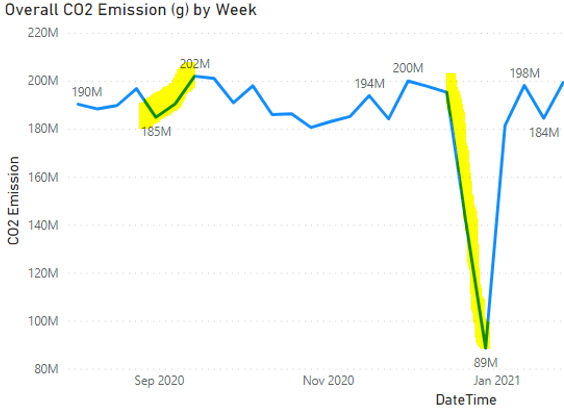
We also compared the company’s hardware emissions to the vehicle industry to help the IT department contextualize their carbon footprint.
A typical American passenger vehicle emits about 4.6 metric tons of CO2 per year. This assumes the average gasoline vehicle on the road today has a fuel economy of about 22.0 miles per gallon and drives around 11,500 miles per year. We found that the company’s devices released the same amount of CO2 emissions (7.58 billion grams) as approximately 1,650 American cars do in a single year!

How can IT reduce their carbon footprint? Smart Automations & Employee Feedback
Currently, this customer’s IT department is using Nexthink’s automations and onscreen employee communications to help cut unnecessary hardware waste. For example, many employees inadvertently leave their devices running overnight. IT uses Nexthink’s Engage capabilities to contact users directly and remind them to turn off their devices when they’re not being used.
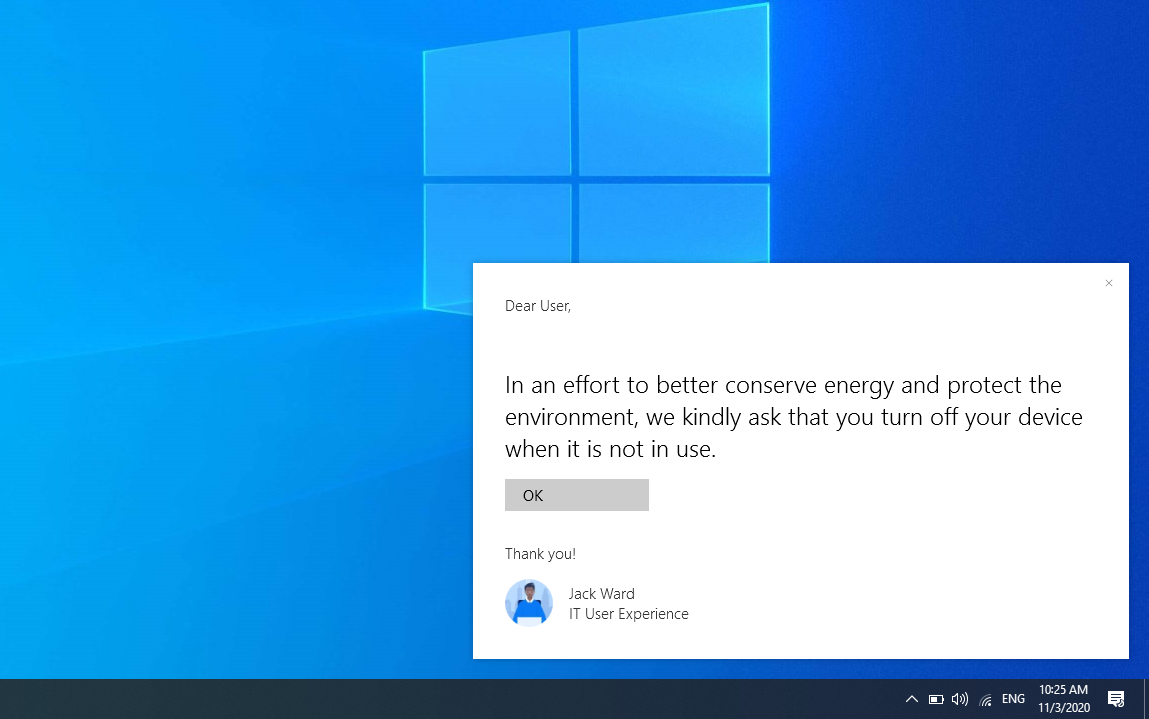
Knowing that sometimes devices need to remain on for things like Windows updates and other software/configuration changes, Nexthink helps IT identify which devices can be automatically powered off or set to sleep mode.
How is this possible?
Our platform gives IT visibility into exactly which devices (remote or in-office) are current or outdated.

And with Nexthink’s library of built-in automations, IT can quickly power down any device (or set to sleep mode) without any disruption to employees.

Connecting the dots – IT’s impact on the Environment
We are now helping this IT department to set clear environmental targets and to understand how their efforts can reduce their carbon footprint.
The formula is quite simple:
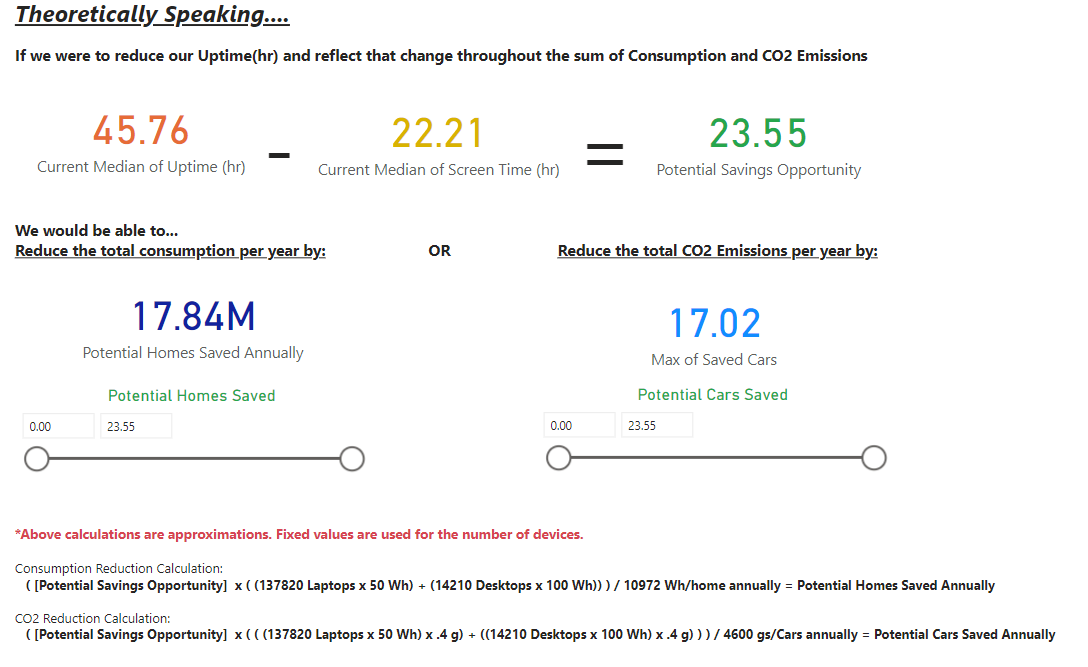
By thinking in comparative terms (i.e. hardware to vehicle emissions) like above, technology leaders can broaden their understanding of Green IT initiatives and better control their environmental impact.
{Download the Green IT Library Pack}
IT’s work doesn’t end with employees anymore, much like it did twenty years ago. Now, tech teams have a chance to expand their role and provide smart solutions that will protect our environment.
Ron Werling, Service Delivery Manager, Nexthink
Ahmed Adham, Managed Services Consultant, Nexthink
If your IT department is eager to improve its work anywhere setup and they seek tangible, proactive solutions, then
a Nexthink representative today.
Prefer to see the Nexthink Experience platform in action?
Related posts:
- Green IT and DEX: Impactful Change Through Employee Experience
- Darker Backgrounds, Brighter Futures: Siemens’ Real-World Green IT
- Data Centers & the Impending Water Crisis – 5 Experts to Follow
- By 2030, e-Waste Will Reach 2.5 Million Metric Tons Unless We ‘Sober Up’